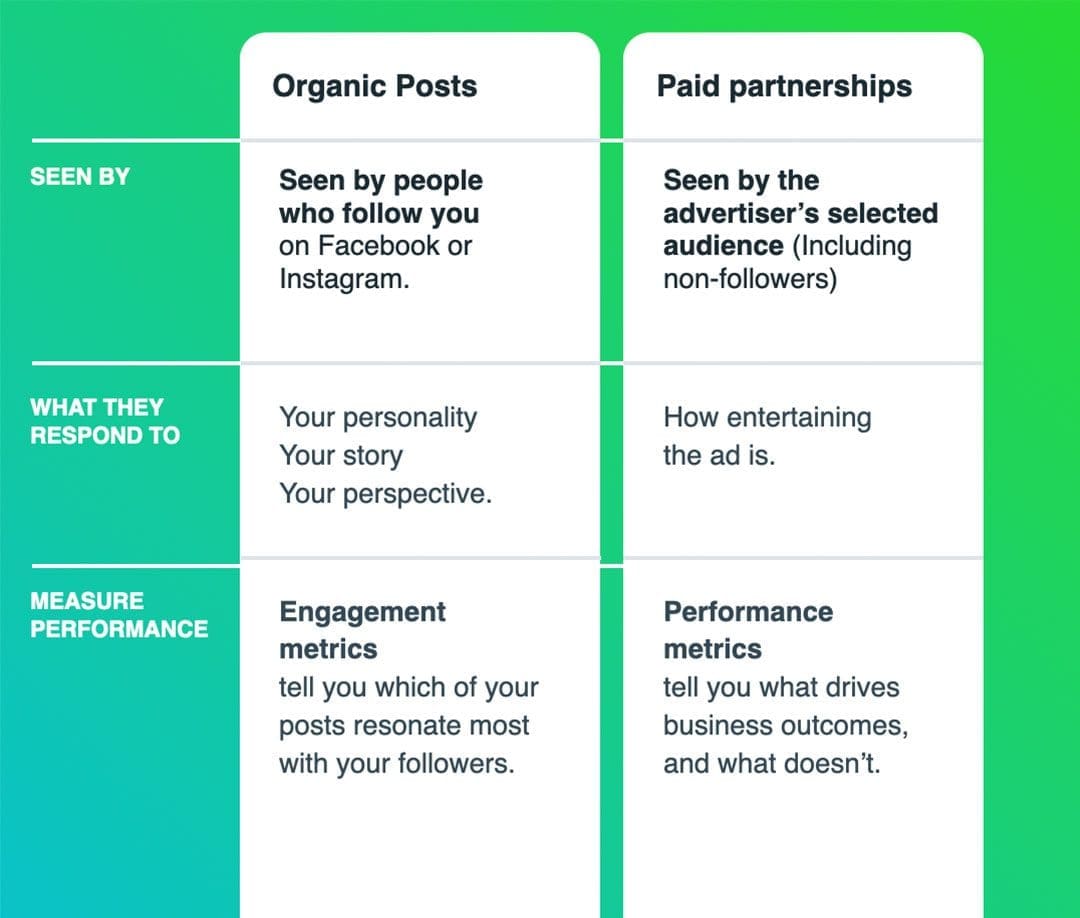Instagram’s Paid Partnership feature allows your brand partners to turn your organic posts into paid ads. We commonly refer to this as ‘branded content’.
Brands have the ability to collaborate with creators and amplify the reach of your content by serving it to their entire audience across Instagram and Facebook. This means your content will be seen as an ad by users who don’t follow or know you, so their response to the content will differ from how your followers would consume or engage with the post.
This extended reach is why you need to create your branded content with Instagram’s best practice advice in mind, while making sure it still feels authentic to you and your aesthetic. This will help ensure that both sides of your audience – your current following and the users you’ll reach when your content is turned into an ad – can enjoy, interpret, and be truly influenced by your content.
To help you create content for brands that’s entertaining and effective, we’re sharing the latest best practice advice directly from Instagram. Think of this as your ultimate branded content guide for Instagram.
We’ll be breaking down our guide into three parts:
Part 1: Ready – Get started by reviewing the brief and aligning with the brand.
Part 2: Set – Tips for effective branded content.
Part 3: Story – Storytelling ideas that work.
But before we begin, let’s quickly remind ourselves of how to use the Paid Partnership tag and answer your most frequently asked questions about this Instagram feature.



